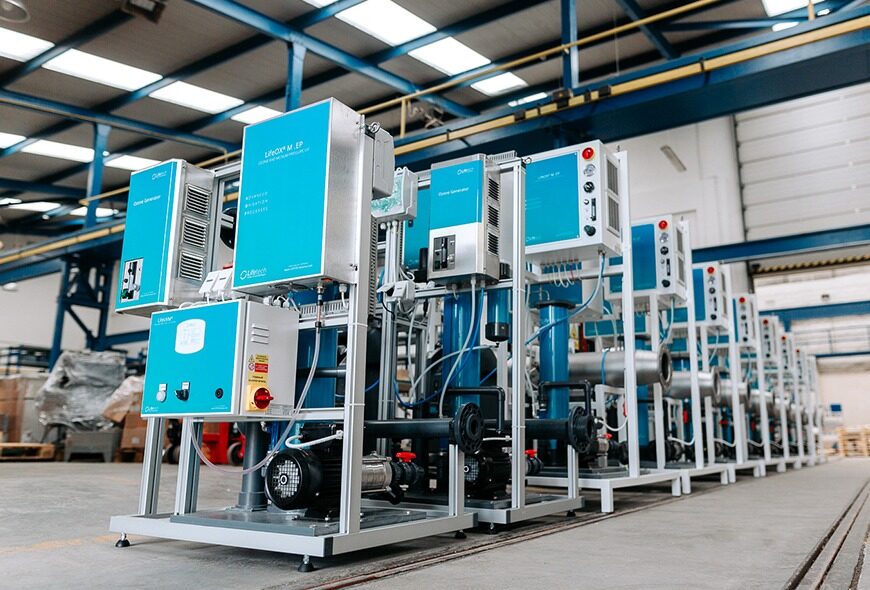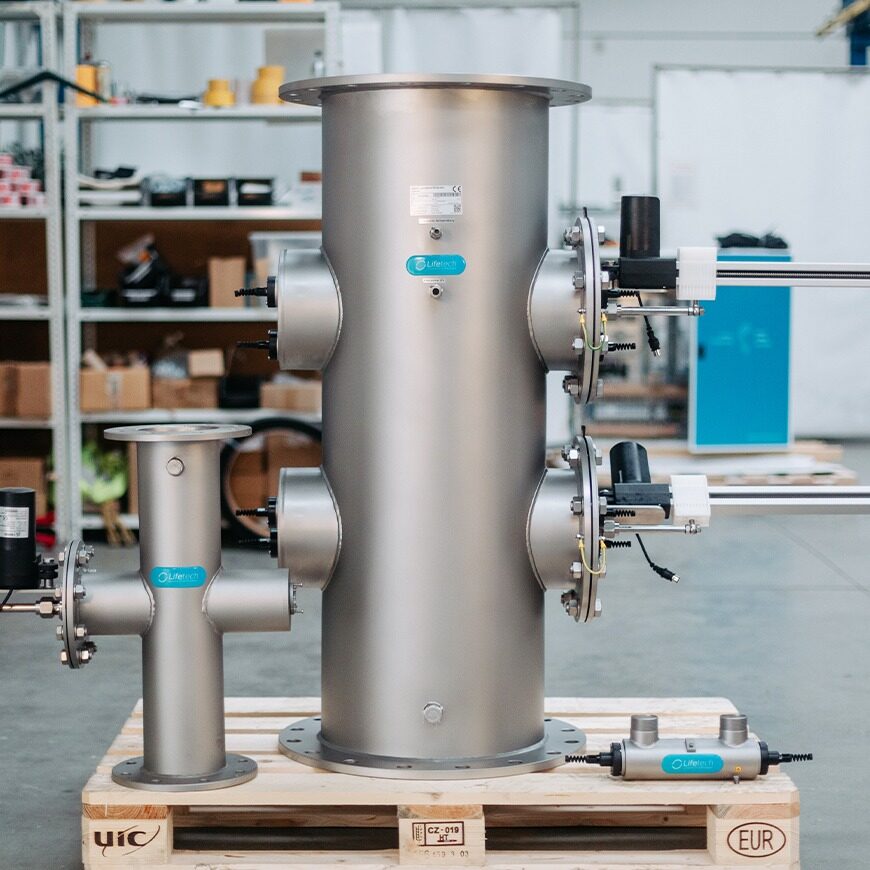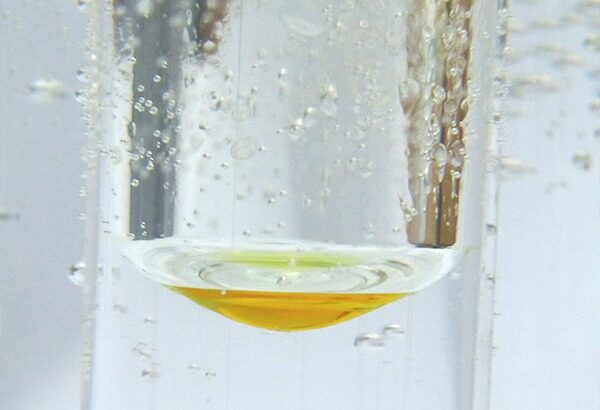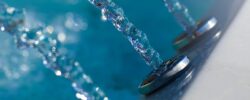Swimming pools and their health risks: what is not talked about and how to prevent the risks
Swimming pools and their health risks: what is not talked about and how to prevent the risks
Swimming pools pose health risks that go beyond standard chlorine disinfection, including the harmful effects of trichloramine and chlorine-resistant pathogens. Lifetech’s advanced LifeOX® and LifeUVM® technologies ensure safe and clean water by breaking down trichloramine and providing lasting disinfection. These solutions improve air and water quality, reduce chlorine usage, and create a healthier environment for all swimmers.
Why we recommend using the LifeOX® technology or the LifeUVM® medium-pressure UV systems
Swimming in pools with fresh, salt or sea water, bathing in natural ponds or even relaxation in whirlpools brings with it some potential health risks. Knowing these allows us to choose the appropriate water treatment technology. Only the right choice of technology allows for a pleasant bathing experience without potential health problems.
The following paragraphs summarize the real health risks that cannot be reliably eliminated by common technologies.
The most serious health risk is posed by the compound called trichloramine, which forms as a result of a reaction of chlorine with organic substances present in the pool water especially due to sweat and urine. Trichloramine subsequently irritates and disturbs the epithelium of the upper respiratory tract, causing allergic symptoms in sensitive individuals and an increased susceptibility to asthma not only in children, but in adults alike. Trichloramine causes also irritation and drying of the skin and eye redness. It is therefore an increased health risk for persons exposed to this substance on a long-term basis such as sportspeople or public-pool staff. Furthermore, it brings about corrosion and degradation of the pool-hall structure. There are reports of cases when trichloramine present in the air of the swimming-pool hall caused destruction and subsequent collapse of the reinforced-concrete framing of the hall. Trichloramine is also responsible for the typical pool odour which tells you immediately that there is this chemical in the air.
Trichloramine is present not only in fresh water pools with classic chlorine disinfection, but also in salt or sea water pools. Attention should be brought to the widely held myth that salt water in swimming pools does not contain chlorine. In salt or sea water pools, chlorine is used for disinfection, too, just like in fresh water pools. The only difference is that chlorine is not added to the water in the liquid form or in the form of chlorine tablets, but is formed directly in the water through the electrolysis of salt (NaCl) present in the water.
The second most important health risk associated with pools and whirlpools is related to the presence of parasitic single-celled organisms Cryptosporidium parvum and Giardia lamblia causing severe diarrhoea. Cryptosporidiosis is a disease caused by Cryptosporidium parvum and it can last for as long as two weeks, accompanied by vomiting, light fever, stomach cramps, headaches, loss of appetite and fatigue. There are reports of a number of serious health problems caused by these pathogens, especially Cryptosporidium, in public pools, where the content of chlorine is permanently monitored. Thus it became clear that disinfection by chlorination does not inactivate these single-celled organisms and it is therefore necessary to add another step of disinfection to the water treatment technology in order to eliminate these resistant pathogens.
Thus, when choosing water treatment technology, it is necessary to opt for a solution that eliminates trichloramine as well as the parasitic single-celled organisms Cryptosporidium parvum and Giardia lamblia.
Other bacteria may be present in pool water such as Escherichia Coli causing diarrhoea, urinary tract infection and high fever, or Legionella, which, in addition, is accompanied by headache and muscle aches, coughing and breathlessness. Disinfection by chlorination, however, is sufficient for their inactivation.
Last but not least, we should mention the influence of algae on the quality of water in pools. Owners of pools tend to perceive algae mostly as an aesthetic issue. Few people realize that algae release toxic substances into the water. The higher the chlorine concentration in the water, the lower the amount of algae, but, from the point of view of health, the chlorine concentration should be kept as low as possible. Also for this reason, it is necessary to choose the right technology for pool-water treatment.
Currently it se very popular to use low-pressure UV systems sometimes referred to as UV-C or UVL systems for disinfecting both fresh and salt water in pools. These systems are suitable for disinfecting water including the inactivation of the above-mentioned resistant pathogens, Cryptosporidium parvum and Giardia lamblia, making it possible to lower the dose of chlorine in water pools. Yet the low-pressure UV systems do not remove the substance most harmful to health – trichloramine. Moreover, they are not able to ensure permanent disinfection of the water as the bacteria inactivated by low-pressure UV is capable of reactivation.
In public pools, medium-pressure UVM systems have become the new standard in water treatment. Medium-pressure UVM systems differ from low-pressure UV-C systems by a different construction of the UV lamp, which makes it possible not only to disinfect the water but also to decompose the harmful trichloramine. Water disinfection is permanent, i.e. the inactivated bacteria cannot reactivate as is the case with low-pressure UV-C systems. For these reasons, the German standard DIN 19643, in its updated version, allows only medium-pressure UVM systems for public pools.
LIFETECH, a world-recognized expert in ozone, UV and AOP technologies (AOP stands for Advanced Oxidation Processes) developed a unique technology, LifeOX®, for the treatment of pool water already in 2002. The technology draws on the experience with public water-treatment plants for drinking and waste water and the treatment of industrial water. The technology by LIFETECH was able to remove substances harmful to health including, among other things, pesticides and dioxins. Back then, the best technology for pool-water treatment was the ozone technology according to the German standard for pools, DIN 19643. LIFETECH, however, was not satisfied with this technology as it is expensive, does not make an efficient use of the ozone and needs a large space for its installation. That is why the company developed the LifeOX® technology, which is now the state of the art in pool-water treatment. LifeOX®, which is based on advanced oxidation processes, not only requires lower investment as compared to ozone technologies according to the German standard, DIN 19643, but it also requires a much smaller space for its installation and, above all, is more efficient. LifeOX® ensures the highest degree of disinfection, breaks up the harmful trichloramine in the most efficient way while eliminating the substances present in the pool water from which trichloramine is formed. Thus, the LifeOX® technology is the only technology that prevents all of the health risks mentioned above.
It should be mentioned that the unique LifeOX® M technology for water treatment developed by LIFETECH has so far been able to resolve all problems the operators of water parks and hotel swimming pools wanted us to address and it even helped them multiply the number of visitors and reduce the operating costs. The investment in LifeOX® M technology has therefore returned incredibly soon, after 8 to 16 months. That was also the reason why the LifeOX® M technology was chosen as the best option for water treatment for the largest Russian water park, the Luzhniki Olympics Complex, which is currently being built.
While developing new solutions and technologies, LIFETECH was also always thinking of private customers. Tested by industrial applications, these technologies bring the same benefits to private customers as to the operators and visitors of public water parks and relaxation centres. For private and small public pools, the company has developed ProfiPure®, a technology that, for a price of standard low-pressure UV-C systems, ensures not only a lasting disinfection, but also and foremost, the removal of the said trichloramine. As a result, the pool water will be free of the typical swimming pool odour and other unwanted characteristics.
Each pool we bath in needs to have some kind of water disinfection. Chlorine is still used most often today. However, if we treat pool water by LifeOX® M or at least the medium-pressure LifeUVM® system, we can reduce the amount of chlorine radically, eliminating the typical unpleasant smell of swimming pools. The obtained water and air quality allows a pleasant bathing experience also to persons with allergies and asthma and makes the stay at the pool more enjoyable for everyone.
A list of benefits of the LifeOX® and LifeUVM® technologies
| Chlorine | Filtration | UVL | UVM | AOP | |
| Trichloramines | – | – | – | yes (remove) | yes (remove) |
| Chlorine | – | – | Reduction by 30% | Reduction by 50% | Destruction |
| Parasite Cryptosporidium parvum | – | – | Inactivation | Destruction | Destruction |
| Parasite Giardia Lambila | – | – | Destruction | Destruction | Destruction |
| Algae | – | – | Inactivation | Inactivation | Destruction |
| Bacterium Escherichia coli | Inactivation | – | Destruction | Destruction | Destruction |
| Bacterium Legionella | Inactivation | – | Destruction | Destruction | Destruction |
It might interest you

Why is Lifetech’s unique technology LifeOX® M the best available technology for pool treatment
Technology
LifeOX® technology provides the highest possible oxidation potential within AOP
Technology
LifeAGE® technology sharply reduces the operating costs of medium-pressure UV systems
Technology



